The colors of Saturn in this image show the striped pattern of clouds.
Click on image for full size
NASA
Saturn's Belts and Zones
The clouds on Saturn, like Jupiter, are divided into stripes called "belts and zones".
In a belt, very powerful winds blow one way. In a zone, very powerful winds blow the other way. These kinds of winds are called "zonal winds".
The winds of Saturn can blow 225 miles per hour, and sometimes even 1000 miles per hour!
On Earth, the most powerful winds during a hurricane can blow 100 miles per hour. So being on Saturn would be like being in a hurricane!
You might also be interested in:
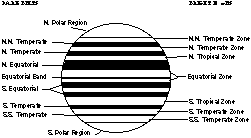
The striped cloud bands on Jupiter are certainly not as straight as they appear to be in this picture! The picture shows that the striped pattern is divided into belts and zones. The belts and zones of
...more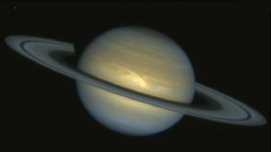
The most important motions in the atmosphere are winds. The major winds in Saturn's atmosphere are the zonal winds which are made of zones and belts. Zones and belts blow in opposite directions around
...more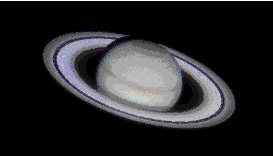
Saturn's atmospheric environment is one of powerful winds, going 250 miles per hour, and temperatures from -270 degrees to +80 degrees. With winds like these, it is hard to have peace and quiet. The region
...more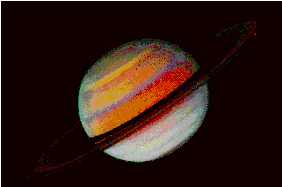
The clouds on Saturn, like Jupiter, are divided into stripes called "belts and zones". In a belt, very powerful winds blow one way. In a zone, very powerful winds blow the other way. These kinds of winds
...more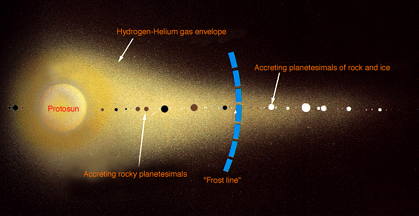
The position of the planets in the solar nebula affected how big they became and what they were made of. The blue line in the picture shows where it became so cold that ice began to form. Planets that
...more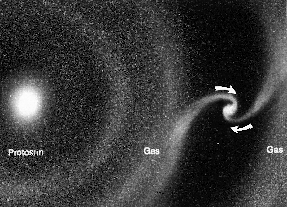
As shown in this picture, while they were forming in the solar nebula, the core of the planets-to-be drew material to themselves from the cloud of gas and dust around them. The bigger planets-to-be were
...more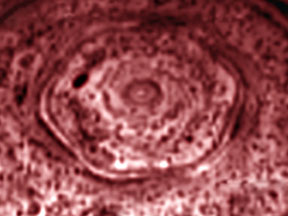
Astronomers have discovered a strange shape in Saturn's atmosphere. The shape is a hexagon. The hexagon is near Saturn's North Pole. Scientists aren't quite sure why Saturn has the hexagon shape in its
...more














